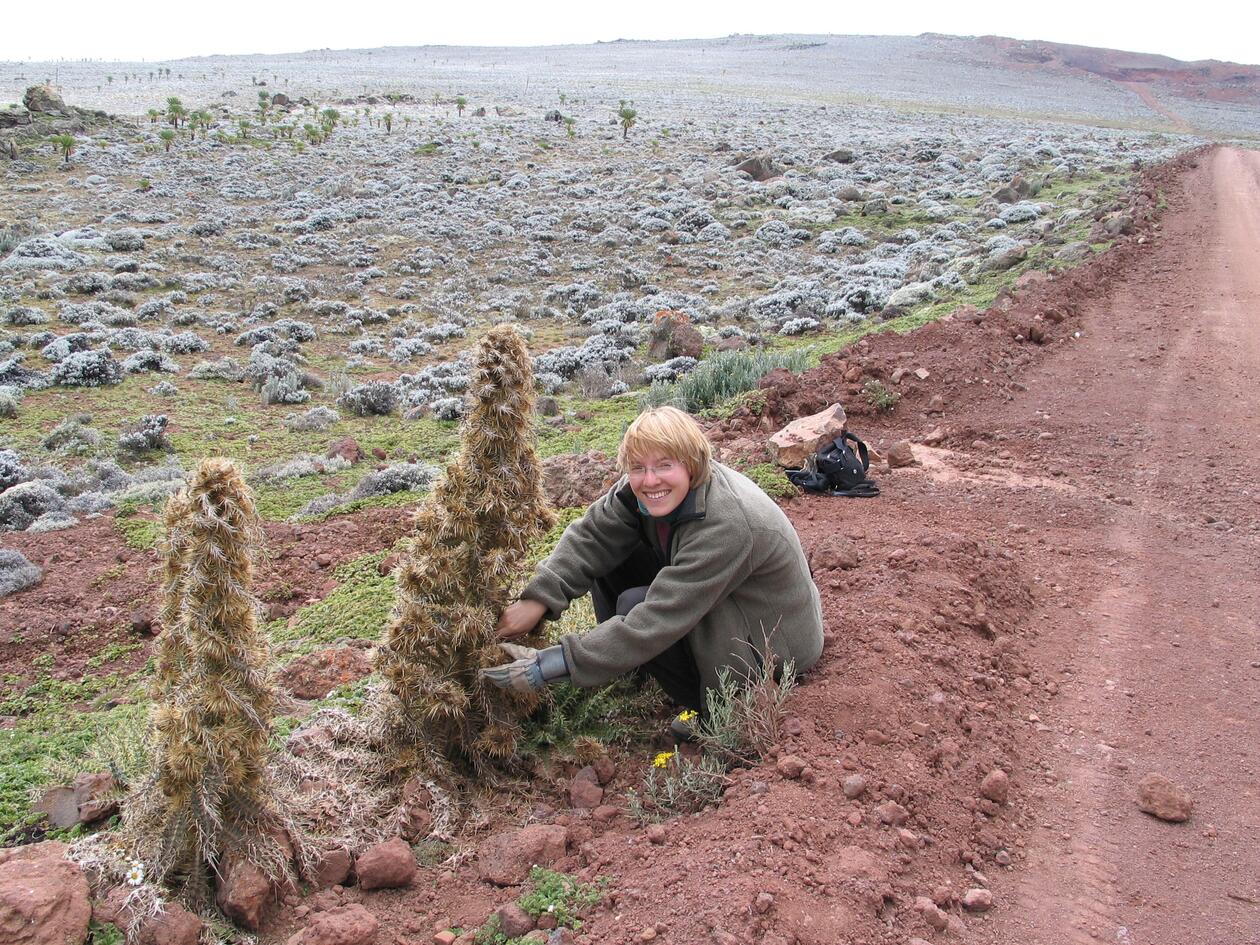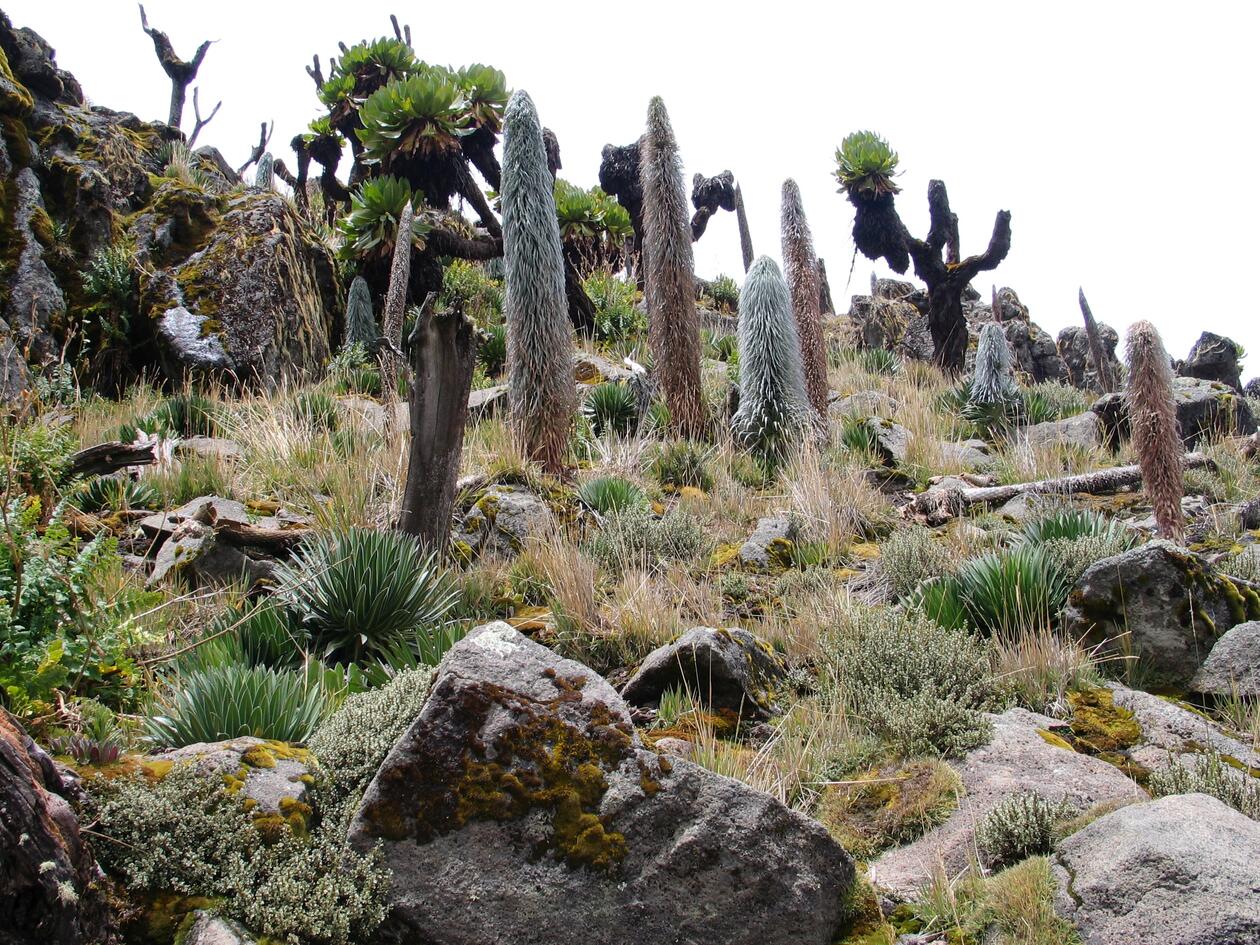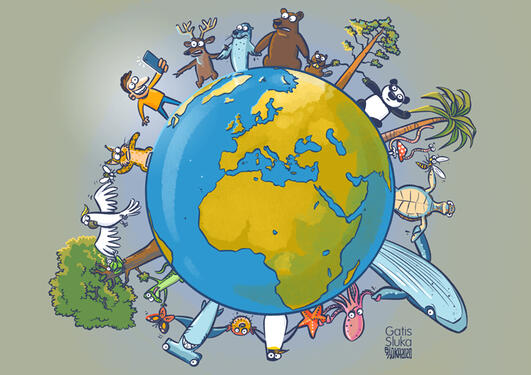The enigmatic tropical alpine flora on the African sky islands is young, disturbed, and unsaturated
New insights into the evolutionary origins of unique African high mountain botanical diversity published in PNAS.

Main content
The high mountains in the tropics of Africa are home to unique communities of highly adapted plants. Usually small, herbaceous rosette forming senecios and lobelias attain giant proportions, towering above the dwarf shrubby forms of plants such as lady’s mantle (Alchemilla) which in the temperate regions are familiar as herbs.
These and other plants have found strategies to resist extreme daily temperature fluctuations, or “summer every day, winter every night”, as the renown Swedish botanist Olov Hedberg put it. These alpine ‘sky islands’ emerge from a surrounding sea of inhospitable lowland tropical vegetation, making them both isolated and unique.
In a new paper, published in ‘Proceedings of the National Academy of Science of the United States of America’ (PNAS), researchers at UiB’s University Museum (UM) and international collaborators analysed genome data from a substantial proportion of afroalpine plants, revealing a dynamic evolutionary history of this remarkable flora.
“We found that frequent colonisations from the distant temperate zones, particularly in the Northern Hemisphere, were followed by frequent extinctions, a smoking gun being the impact of climate changes during the ice age cycles”, senior author Michael Pirie says.
Vulnerable to climate warming
Extinction and re-colonisation of the afroalpine flora may have been frequent as measured on an evolutionary timescale – as shown in this study, mostly within the last 5-10 million years – but this is nothing compared to the rapid pace of modern human-mediated extinctions.
“Whole ecosystems are impacted by ongoing anthropogenic climate change”, says Berit Gehrke, co-author, longstanding researcher of the afroalpine flora, and now head of the UM’s Bergen University Gardens.
She adds: “The afroalpine flora will be particularly vulnerable to human-induced climate warming because it reduces the alpine habitat into smaller and smaller areas with increasing elevation. This effect is compounded by direct habitat destruction, for example through over-grazing.”
The work represents another contribution to UiB’s efforts in the ‘Global Coalition United for Biodiversity’, increasing our knowledge of fundamental patterns in biodiversity. In addition to the major conclusions, the results revealed complexity in the relationships between and within afroalpine species. The clear implications are that further research is needed to delimit and prioritise conservation of species in these threatened ecosystems.
- Read more in the paper at PNAS


